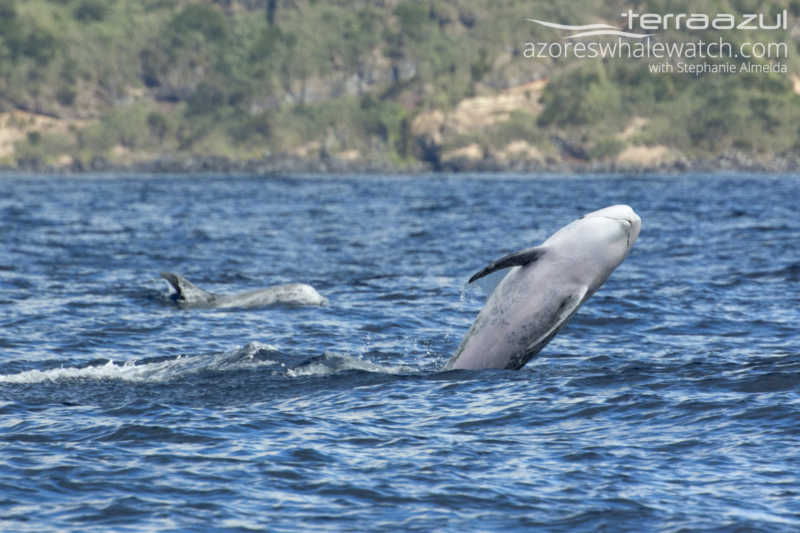
Risso’s dolphins are one of the resident species of the Azores, this means they live here during the entire year. At Terra Azul, we usually see them from March to December, with peaks in April, June/July and September/ October.
This species can be found in open waters and close to the shore. However, they show some preference for submarine canyons and areas with steep slopes.
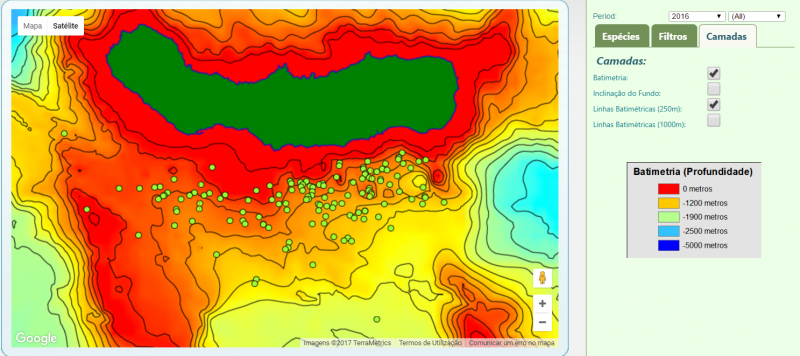
Distribution of 2016 Risso’s dolphins sightings with bathymetric information
This species can be found all over the world except in very cold waters.
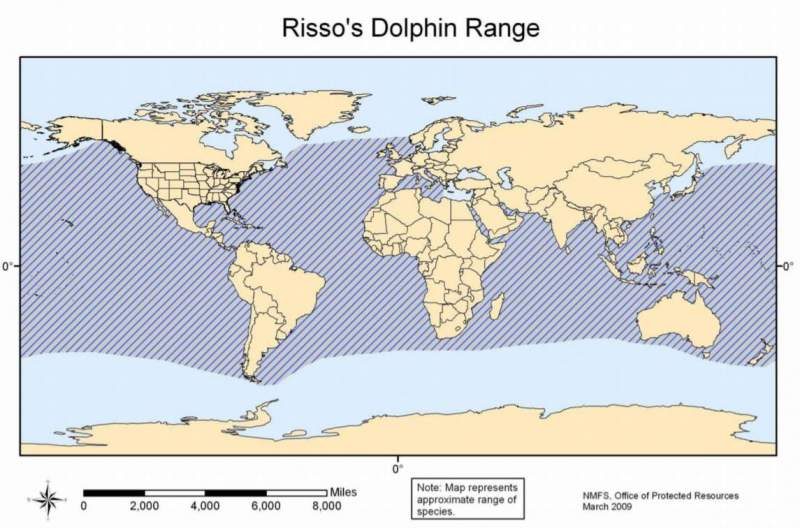
Risso’s Dolphin distribution map
Measuring up to 4 meters and weighing around 500kg maximum, these animals are very easy to identify at sea because of their white coloration. Calves are born dark grey with 1.1 to 1.7 meters. However, as they grow older, they become lighter and accumulate scars becoming almost white. These scars are mainly the result of social interactions, because they don’t have hands dolphins interact a lot with their mouths. However, they are also the result of interactions with their prey.
Risso’s dolphins feed mainly on squid and other cephalopods. Their favourites are mesopelagic migrators, i.e. during the night their migrate from bigger depths to shallower water, and so Risso’s dolphins are particularly active at night. Cephalopods have hard beaks that they can use to defend themselves from predators, so some of the scars of Risso’s dolphins come from this interaction.
Did you know that Risso’s dolphins only have 2 to 7 pairs of teeth in their lower jaw?

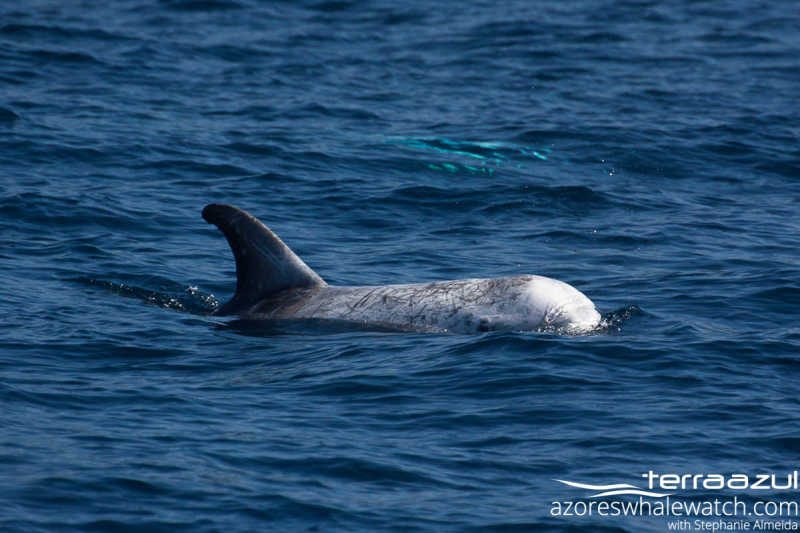
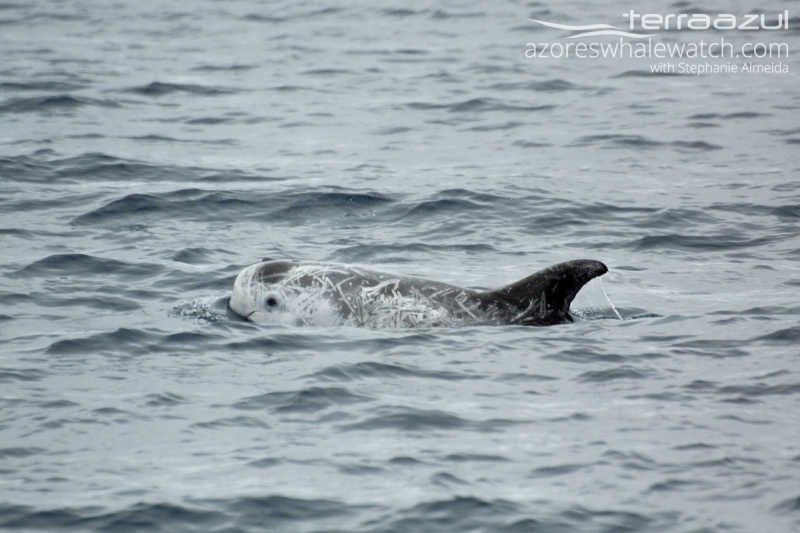











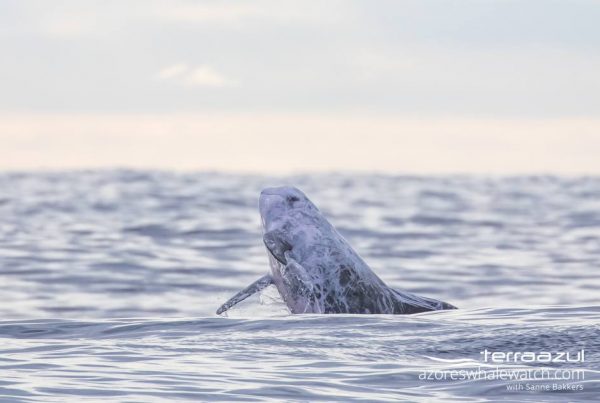
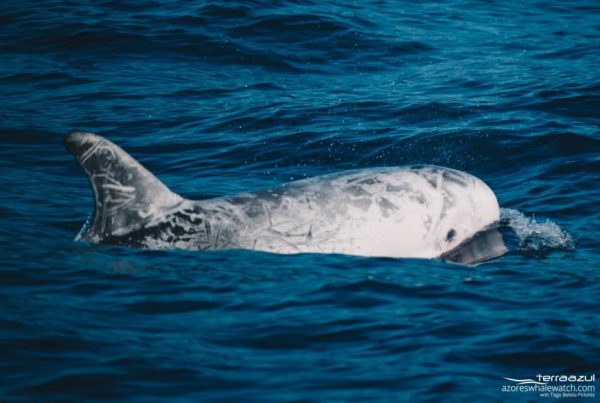
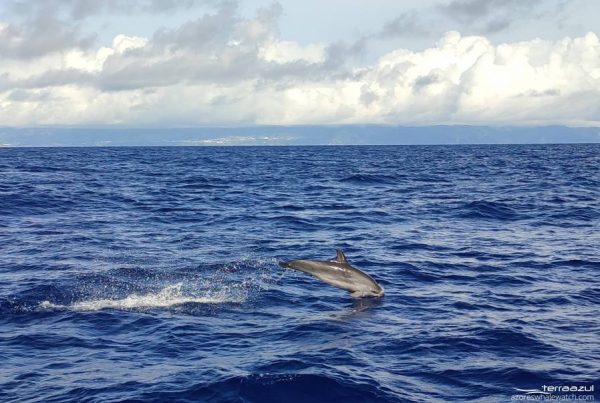



Your thoughts on this?